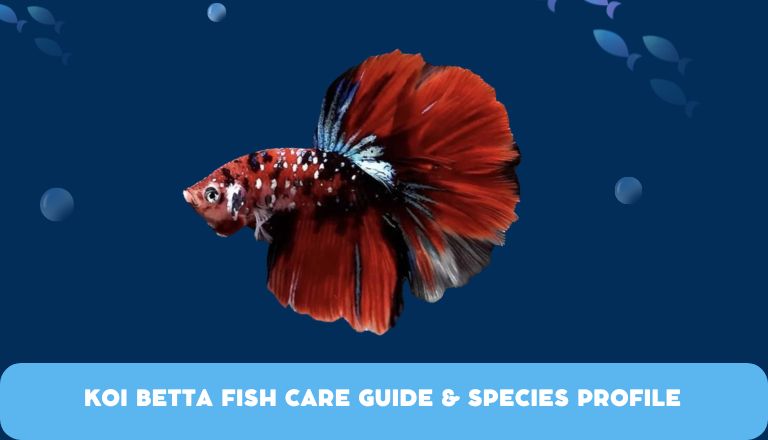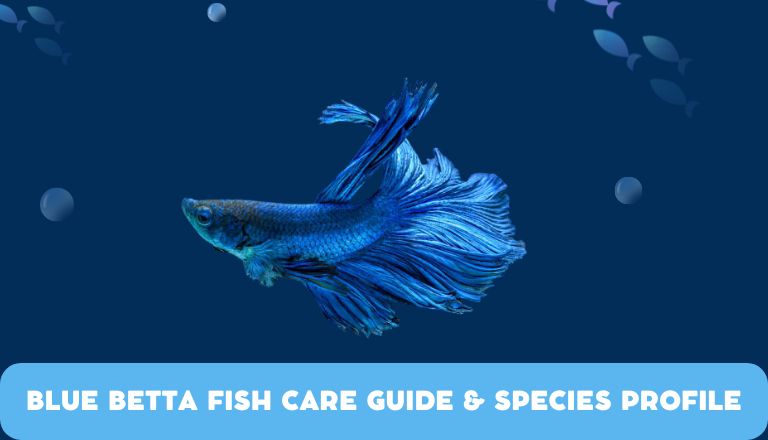Koi Betta Fish Care Guide & Species Profile
I love watching my Koi Betta fish in their tank. Their bright colors and graceful movements are captivating. Koi Betta fish are not just beautiful, they also need special care and have interesting characteristics. In this guide, we will learn all about Koi Betta fish, from where they come from to what makes them special in the aquarium world. Come with me as we discover how to take care of these amazing fish and appreciate their beauty in any aquarium.
Koi Betta Fish Facts & Overview
Koi Betta fish are a stunning addition to any aquarium. These fish have a moderate care level. They require a stable tank environment with proper filtration and regular water changes. Koi Bettas can be housed with peaceful tank mates.
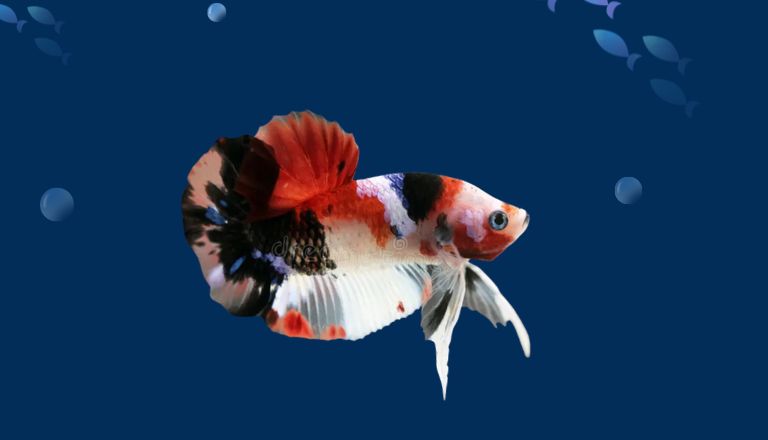
They have beautiful colors with red, white, and metallic shades. With proper care and a balanced diet, they can live up to 3-5 years in captivity. Provide them with at least 5 gallons of water per fish in an aquarium.
Origin
The koi betta fish, also known as Siamese fighting fish, comes from Thailand. Originally bred for fighting in royal palaces, they are valued for their colors and behavior. Selective breeding has created different colors and fin shapes.
In Thai culture, koi bettas symbolize protection and luck. They are given as gifts for good fortune. People worldwide love these fish for their beauty, intelligence, and personalities. Despite their small size, koi bettas are feisty and territorial.
Koi Betta Size & Lifespan
These stunning creatures typically grow to be around 2-3 inches in length, making them a relatively small species of Betta fish. Despite their small size, Koi Bettas are known for their vibrant and eye-catching colors that add a touch of elegance to any aquarium.
Koi Bettas have an average life expectancy of 3-5 years with proper care in a suitable environment. With proper nutrition, water quality maintenance, and sufficient space to swim and explore, Koi Bettas can live up to 7 years or even longer.
Appearance
Koi betta fish are stunning with vibrant colors like orange, red, blue, yellow, and black. Each fish has unique colors and patterns, which makes them special. They have long, flowing fins that move gracefully in the water.
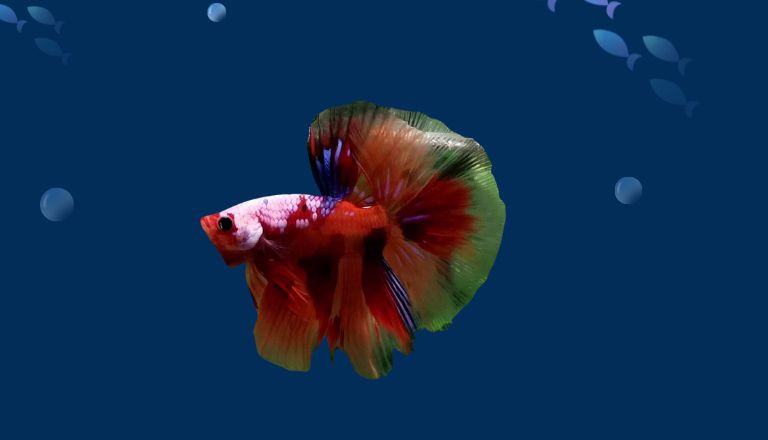
The fins are transparent, allowing light to shine through and show their detailed patterns. Watching these fish swim is captivating because of their beauty and elegance.
Behavior
Koi betta fish are interesting because they are territorial. They can be aggressive towards other fish to protect their space. When defending their territory, they spread their fins wide. Koi bettas can also recognize their owners.
Koi bettas can form strong bonds with their caregivers and display unique behaviors around them. They may eagerly swim towards food or dance gracefully in response to familiar voices. In groups, koi bettas establish a social hierarchy where dominant fish display aggression and submissive ones try to avoid conflict.
Habitat and Tank Requirements
To keep koi betta fish healthy in a tank, use a 5-gallon tank with hiding spots, live plants, and soft substrate. Use a good filter and change some of the water weekly to keep the tank clean. Filter the water gently and use low flow for koi bettas as they feel difficulty in swimming.
Give them proper lighting to mimic their natural habitat and help plants grow. Keep the water pH level around 7 for their health and color. Creating a good environment with the right tank conditions will make sure your koi betta fish stay happy and healthy.
Tank Conditions
Keep the pH levels between 7.0 and 7.5 to avoid stressing the fish. Be careful of high levels of ammonia and nitrite because they can harm the fish. Keep the water temperature stable between 75-80 degrees Fahrenheit to keep your koi bettas healthy.
Test the water regularly to make sure it’s good for your fish. By focusing on these key factors, you can create a healthy environment for your koi bettas.
Compatibility and Tankmates
Choose friends for your koi betta fish that get along well. This will create a diverse and healthy aquarium for everyone to enjoy.
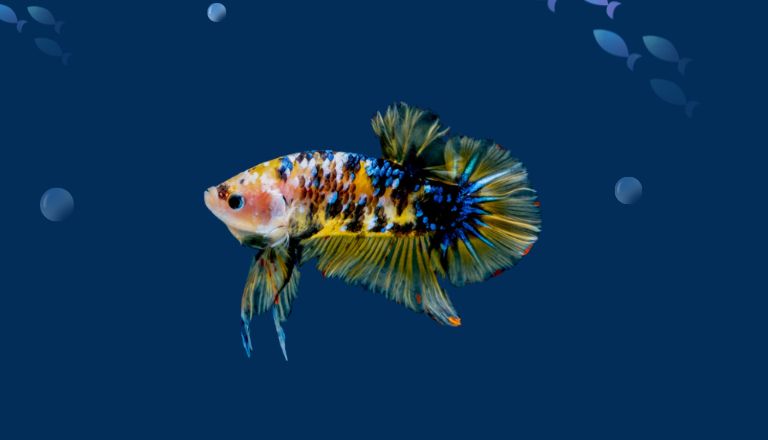
Koi bettas can be aggressive, but some fish can live peacefully with them. Choosing fish that are similar in size and personality will prevent fights. Good tankmates for koi bettas are Neon Tetras, Harlequin Rasboras, and Ghost Shrimp.
These fish do well in the same water conditions as koi bettas. Keep an eye on all the fish in the tank to watch for any signs of fighting or stress.
Tankmates (To Avoid)
Avoid aggressive or fin-nipping fish that could stress out your betta. Some examples are Tiger Barbs, certain Cichlids, and Larger tetras that bully. Also, avoid territorial or dominant species that may compete with your betta for space or resources.
Also, avoid the bottom-dwelling fish like Corydoras catfish or Loaches to prevent territorial disputes.
Diet and Feeding Requirements
Koi betta fish require a balanced diet to thrive in captivity. These beautiful fish are carnivorous by nature and prefer high-protein foods such as bloodworms, brine shrimp, and pellets. Avoid overfeeding koi bettas as they have small stomachs and can easily become bloated if given too much food.
It is beneficial to supplement their diet with fiber sources like spirulina or vegetables to support their digestion. Feed them twice a day in small portions. Ensure good water quality, as poor conditions can affect the appetite and health of koi betta fish.
Breeding
Breeding koi betta fish requires careful planning and attention to detail. One key aspect is selecting the right pair of bettas for breeding, based on their bright colors and fin shapes. Provide a suitable environment for the breeding process, with a clean tank and hiding spots for the female betta.
During the breeding process, monitor the male betta’s behavior towards the female. The male will build a bubble nest at the water surface to house the fertilized eggs, showing his readiness for spawning. Once mating occurs, remove the female from the tank to prevent any aggression from the male toward her.
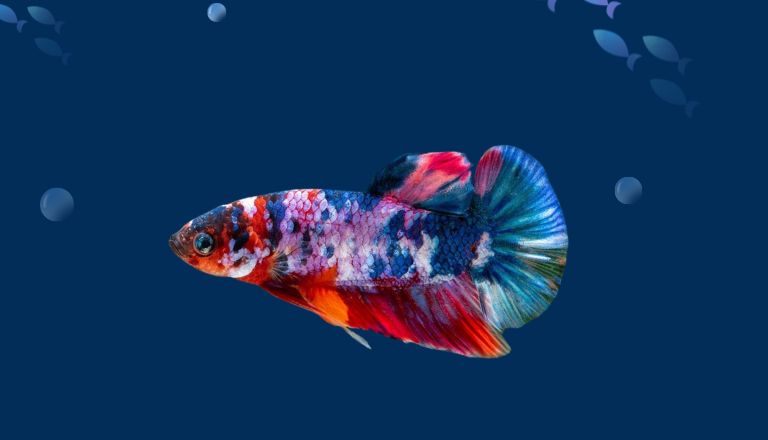
Through proper care and monitoring, breeding koi betta fish can be a rewarding experience.
Where can you buy Koi Betta Fish?
One of the best places to find Koi Betta is a specialized fish store. These shops often carry a variety of unique and vibrant fish, including Koi Betta varieties. The staff there can provide you with valuable insights on care tips and tank setups.
Online marketplaces are another great option for finding Koi Bettas. Different Websites feature breeders who specialize in these beautiful fish. Buying online gives you access to a wider variety of colors and patterns.
Conclusion
To care for Koi Betta fish, you need to know what they need and give them the right environment. Keep their tank clean, check the water quality, and feed them well to keep them healthy. Each Betta fish has its personality, so adjust things to suit them. With good care, Koi Betta fish can be happy, show their bright colors, and play around. Learn about these pretty fish and make a nice home for them in your aquarium.
FAQs
Are Koi Bettas Rare?
Koi Bettas are a popular type of Betta fish known for their vibrant orange, white, and black patterns resembling koi fish. They are not rare and can be easily found in pet stores and online from reputable breeders.
How Long do Koi Betta Fish Live?
Koi Betta fish usually live 2-3 years in captivity, but with good care, they can live up to 5 years or more. Water quality, food`, tank size, and genes affect their lifespan.
Are Koi Bettas more Aggressive?
Koi bettas are not more aggressive than other bettas. All bettas can be territorial and aggressive. Tank size, water quality, and personality affect a betta’s aggression. To reduce aggression, give your koi betta enough space, hiding spots, and clean water.
Can You keep a Male and Female Koi Betta Fish together?
Male and female koi bettas should not be kept together in the same tank. Male bettas are aggressive, especially towards other males and sometimes females. Keeping them together can lead to stress, injury, or death. It’s better to have separate tanks for each fish to prevent fights.
Why are Koi Bettas so Expensive?
Koi bettas are expensive for several reasons. Their unique coloring and patterns make them visually striking. These fish often display a mix of vibrant colors, resembling koi fish, which is rare among bettas. Breeders invest time and effort to create these beautiful patterns, driving up the cost.
Breeding koi bettas requires skill and knowledge. The breeding process takes time and resources, leading to higher prices in the market.

